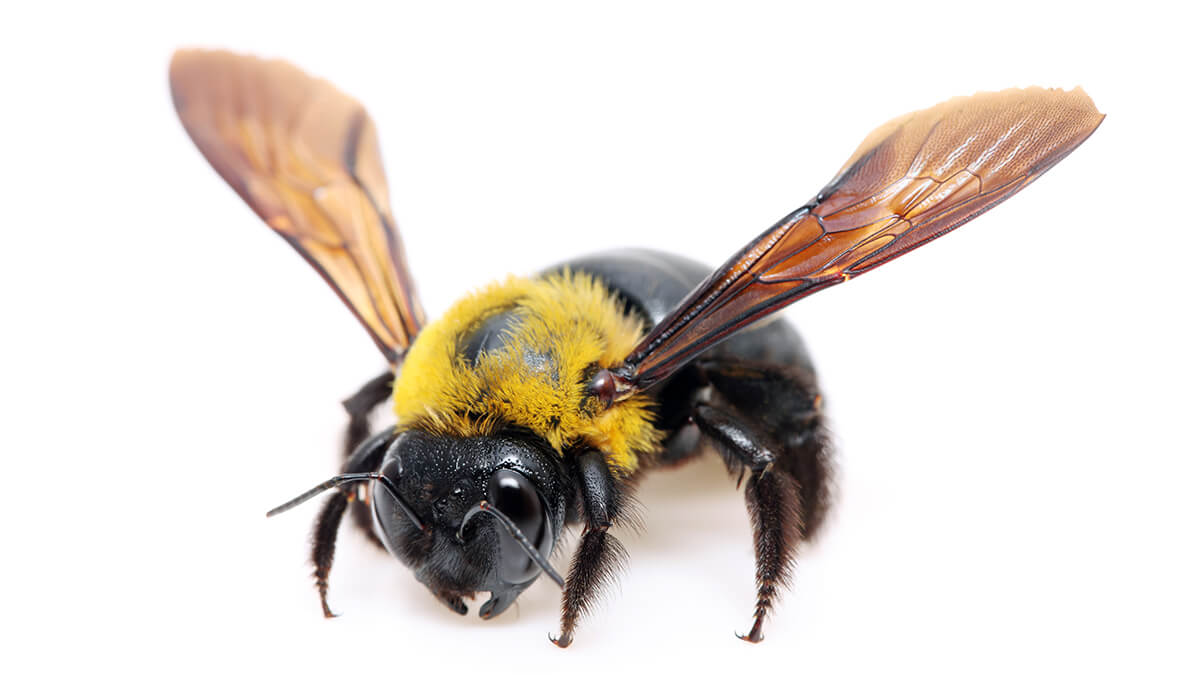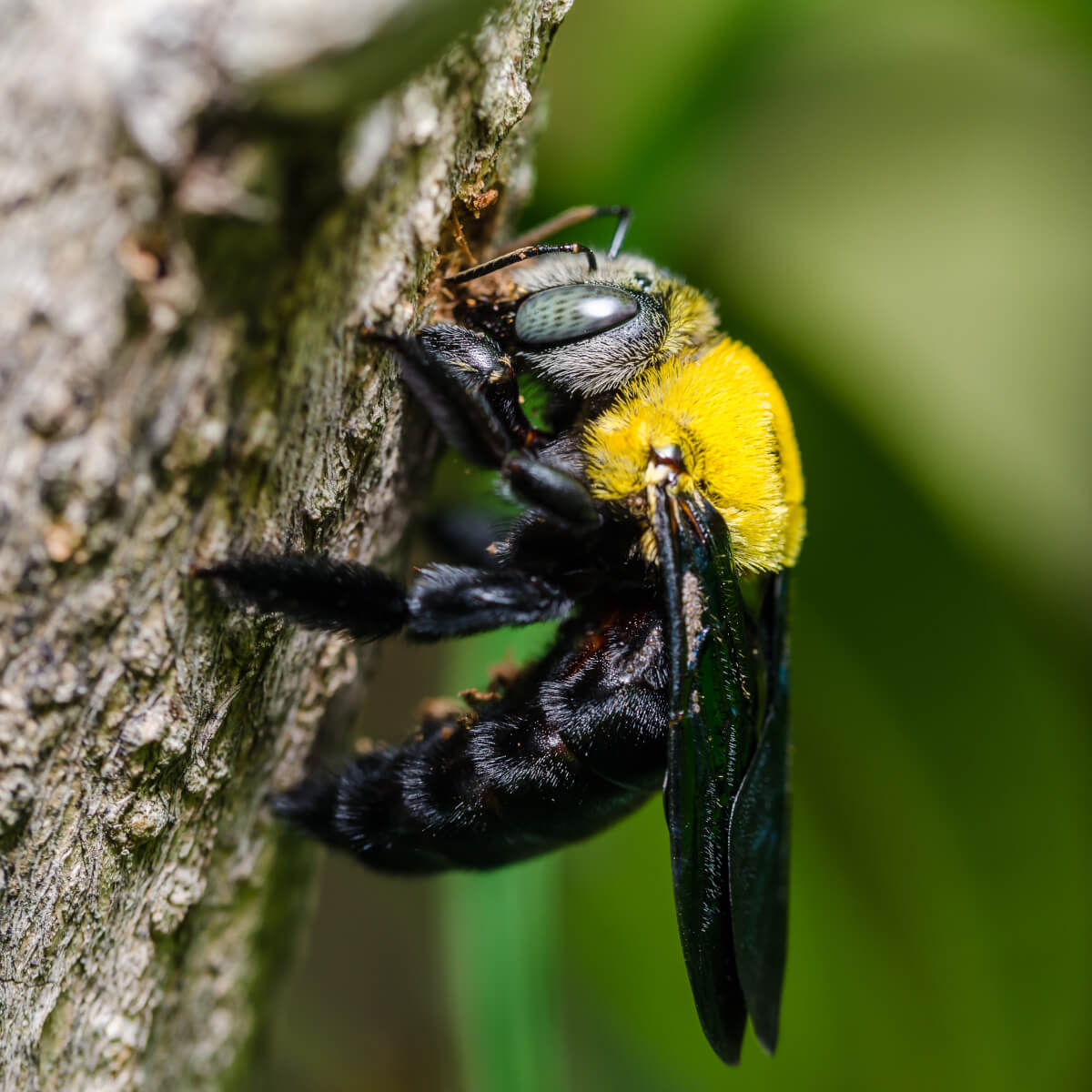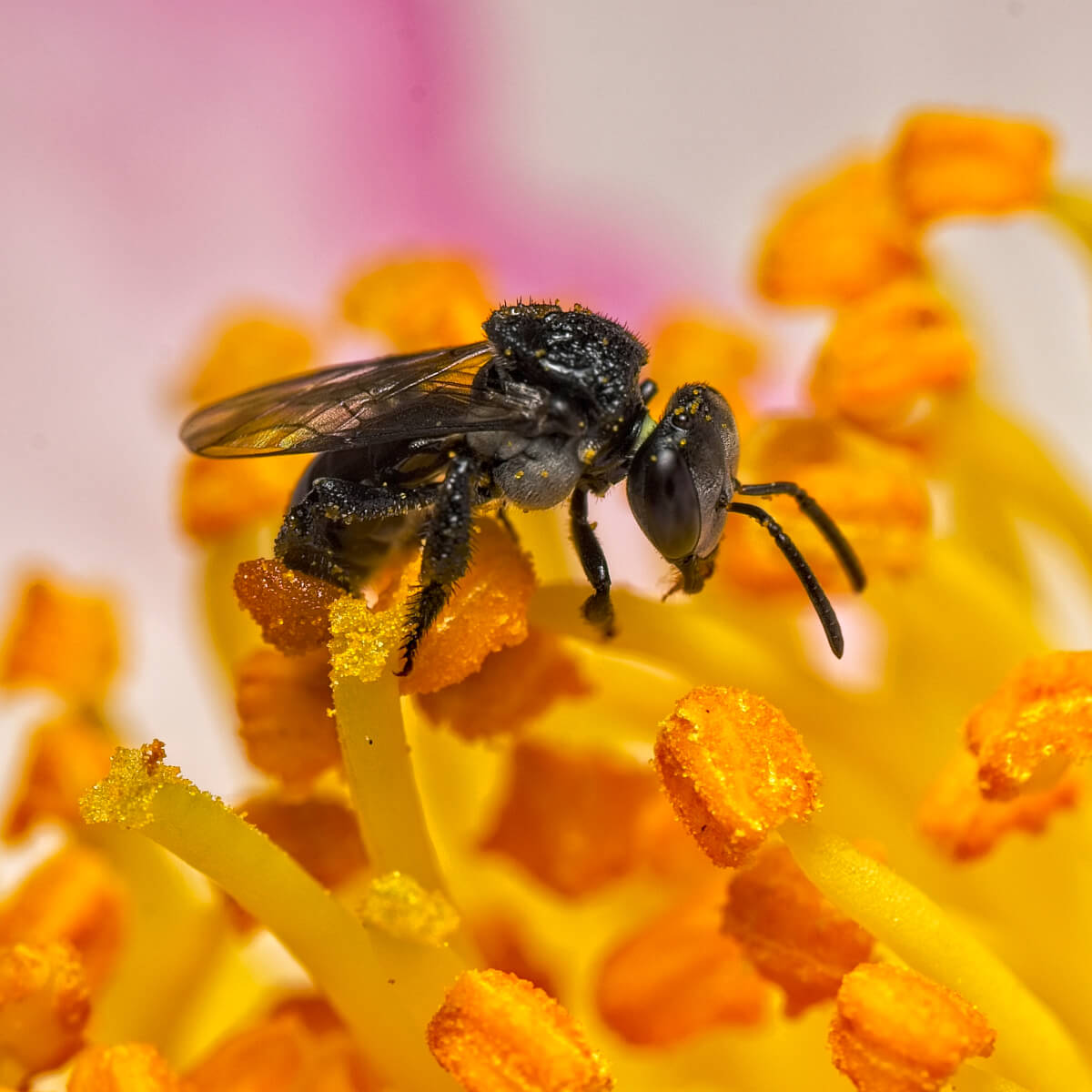Bees of Australia

Bees are an insect of the order Hymenoptera, alongside their cousins the ants and the wasps. With over 1,500 species of native bees, Australia sports an impressive pollinator repertoire. Most of them are solitary and non-aggressive. In fact, most of them are too small to deliver a serious sting or pose a threat (unless you’re allergic).
Even though most Australian bee species are solitary and do not generally infest a property, this doesn’t mean it won’t happen - both solitary and social bees can be guilty of a bee infestation. Another well-known culprit responsible for a bee infestation in your home can be the introduced European honey bee. It is not uncommon for the species to choose to nest in walls and sheds.
Bees are the world's great pollinators. However, just like wasps, bees are armed with stingers that deliver venom in one fell swoop. Their stingers usually remain inside the affected animal or human and continues to release venom and other chemicals that signal nearby bees of the threat. If a person is allergic, this could have serious complications and even a lethal outcome. Now, with that being said, let’s delve into some of the native Australian bee species.
Australian Native Bees
Types of bees
- Social native bees - Social native Australian bees have a traditional social hive structure. There's one fertile female (the queen), males (drones), and hundreds, even thousands of sterile females (workers). Australian native honey bees fall within this category; they produce less honey than their European counterparts but are essential to the delicate ecosystem. Australia is a host of only 11 native social bee species. The most famous of those species is the Stingless bee.
- Semi-social bees - Semi-social bees work in small groups to maintain their nests but don’t have a traditional social structure. Several fertile females can inhabit the same nest and they cooperate for the greater good. Unlike social bees, their nests don't usually reach big sizes. They also do not exhibit the same social roles as social bees, such as queen or workers.
- Solitary native bees - Solitary native Australian bees are complex in the sense that all females are fertile and create their nests. Most native species fall into this category. They don't tend to their young or the nest for very long. Nests are temporary spawning grounds for their offspring, but they don't remain in a colony structure like social bees. This makes them an easy target for cuckoo bees. Some examples of solitary bees are Blue-banded bees, teddy bear bees, resin bees, and leafcutter bees.
How to detect a bee infestation
It's really not that hard to recognise that there are bees living in or close to your home. The important thing is to know more about the species behaviour and habits. What measures you will have to take to deal with the bees is the tricky part.
Signs of a feral bee infestation
As we've mentioned before, bee infestations are not hard to detect, it's the removal that's challenging. Much like wasps, feral honey bees will likely build their hives in trees, under eaves, or in sheds. If there's an irregular number of bees flying around trees or your shed, that's probably where it will be located. Learn more about the difference between bees and wasps.
Signs of a carpenter bee infestation
Many people believe that carpenter bees eat wood, but that is incorrect. They simply carve it. And they do it very efficiently. Having a carpenter bee infestation is more difficult to spot because they create their nests in wood. They can do structural damage very, very quickly, so seek immediate professional help if you think your place is infested. Finding small holes in the wood and detritus outside is a pretty clear indication.
What to do in case of a bee infestation?
The most important thing is to stay calm. Do not attempt to remove the hive on your own. Bees will die to protect it and you will get stung. Stay away and call in a professional because it's important to know what species is infesting you. Why does that matter?
The European honey bees in Australia are an invasive species. While they're under control by apiarists and honey producers, it's fine. However, in some instances, a new hive is formed and it goes feral, meaning it's under no one's control. Those hives can grow quite a bit due to the social nature of the bees. As they're not native to Australia, they don't have any natural predators here, either. This makes them compete with the native bee species. And unlike most native species, they don't leave much behind. This can cause a great problem for our native bees.
You might have heard about the dwindling bee populations. Well, we're not talking about invasive species. So it's important to know what you are dealing with before further measures are considered.
What should you do in case of a bee sting?
- One of your first instincts should be to remove the stingers. Otherwise, it will keep delivering painful injections of venom over time. Careful not to squeeze it, though. That might release the remaining venom all at once.
- In case of allergies, immediately look for the person's auto-injector (which contains epinephrine) and seek immediate medical attention. Swelling, trouble breathing, loss of consciousness and low blood pressure can all be symptoms of anaphylaxis, as a result of the bee sting. Note that people might not know they are allergic to stings if they've never been stung before.
- A good treatment is to put ice, as well as baking soda and water on the spot, as soon as you get stung by the bee. The ice prevents swelling. The baking soda and water mix should reduce the itchiness. These are all natural bee sting remedies you can try at home.
- Check-in with your general physician just in case.
Do all bees have stingers?
No, they don't. In the order Hymenoptera, only female bees have stingers. Male bees (called drones) do not sting as they lack stingers altogether. Their only function in life is to procreate, which is why they have relatively short lifespans.
There are also species, such as the Austroplebeia stingless bees (native to Australia) that simply do not have stingers. Some other species, like the cuckoo bees, have reduced stingers, which limits their ability to sting. Read more interesting facts about bees.
Are bees pests?
On one hand, native bees are essential to the ecosystem. They evolved alongside native plants and have become the engine of their pollination.
Most native bee species in Australia are solitary, which means every female is fertile and they build their own nests. Hence, even if they live in close proximity to one another, most of them wouldn't be able to cause an infestation and be labelled as pests.
The social stingless bees are harmless and live in harmony with their environment. So they may not be considered dangerous, either. However, this is a pest control site, so there must be bees that are pests, right? An excellent observation!
Indeed, the introduced European honey bees are responsible for most bee infestations. It's usually colonies gone feral. Because of their quick reproduction, they often out-compete the native bees for resources and disturb the natural order of things. They also aggressively defend their nests, so it's necessary to remove them carefully. Do not attempt this on your own because there is a serious risk. It is always safer to opt for professional bee removal, instead.









